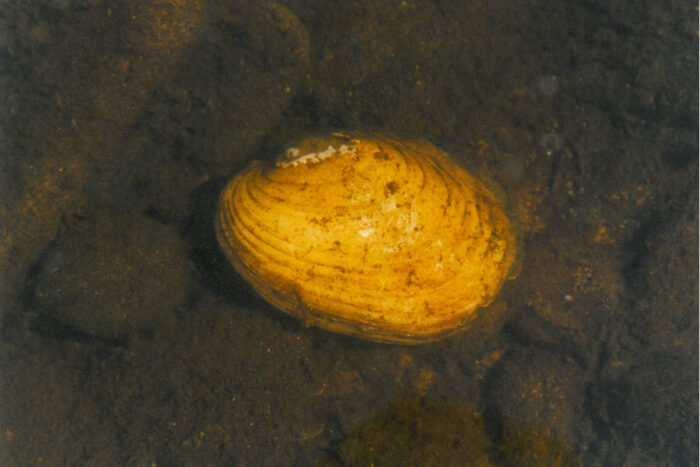Yellow Lampmussel
Lampsilis cariosa
The yellow lampmussel is a large, freshwater mussel that lives along the East Coast.
This section shows one large critter image at a time. Use the thumbnails that follow to select a specific image to display here.

This gallery contains a grid of small thumbnails. Selecting a thumbnail will change the main image in the preceding section.
Appearance
The yellow lampmussel can grow up to five inches in length and is oval shaped. Younger mussels are bright yellow and fade with time and have some streaks of green. The yellow lampmussel has a foot that they use to anchor themselves to the bottom of a river and bury themselves in the sediment.
Feeding
Yellow Lampmussels are filter feeders and eat bacteria, algae and plant and animal debris.
Predators
Aquatic mammals such as otters, muskrats, racoons. Fish and birds are also predators.
Reproduction and life cycle
In late summer, male mussels release sperm into the water and females filter it through their gills. Larvae grow in a part of the female's gills called a marsupium.
The next summer the female releases the mature larvae. The larvae then have to attach to a host fish and spend a few weeks or months attached to the host fish’s gills (there is no apparent harm to the fish) before dropping off of the fish’s gills and settling at the bottom of a river. Two known hosts for the yellow lampmussel are white and yellow perch.
For the first four or five years the mussels grow quickly and live up to 15 years.
Did you know?
- Out of 300 native mussel species in North America, roughly 75% are state or federally listed as endangered or threatened.
- Major decline of mussel population include habitat fragmentation and loss and declining water quality.
- The non-native zebra mussel, which was accidentally introduced in North America, is also a threat and out competes the yellow lampmussel for space and food.
Sources and additional information
- Yellow Lampmussel - Pennsylvania Natural Heritage Program
- Yellow Lampmussel - Maine Department of Inland Fisheries and Wildlife Endangered Species Program
- Yellow Lampmussel - North Carolina Wildlife Resources Commision
